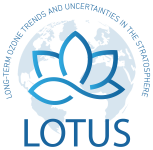Speaker
Description
Reliable ozone trends after 2000 are essential to detect early ozone recovery. However, the long-term ground-based and satellite ozone profile trends reported in the literature show a high variability. In order to determine what part of the variability between different datasets comes from measurement timing, Payerne microwave radiometer (MWR) and chemistry-climate model (SOCOL v 3.0) trends were estimated for each hour of the day with a multiple linear regression model. Ozone trend profiles have been quantified as a function of local solar time (LST). In the mid- and upper stratosphere, differences as a function of LST are reported for both the MWR and simulated trends for the 2000-2016 period. However, these differences are not significant at the 95% confidence level. In the lower mesosphere, the 2010-2018 day- and nighttime trends have been considered. Here again, the variation of the trend with LST is not significant at the 95% confidence level. Based on these results we conclude that significant trend differences between instruments cannot to be attributed to a systematic temporal sampling effect.

